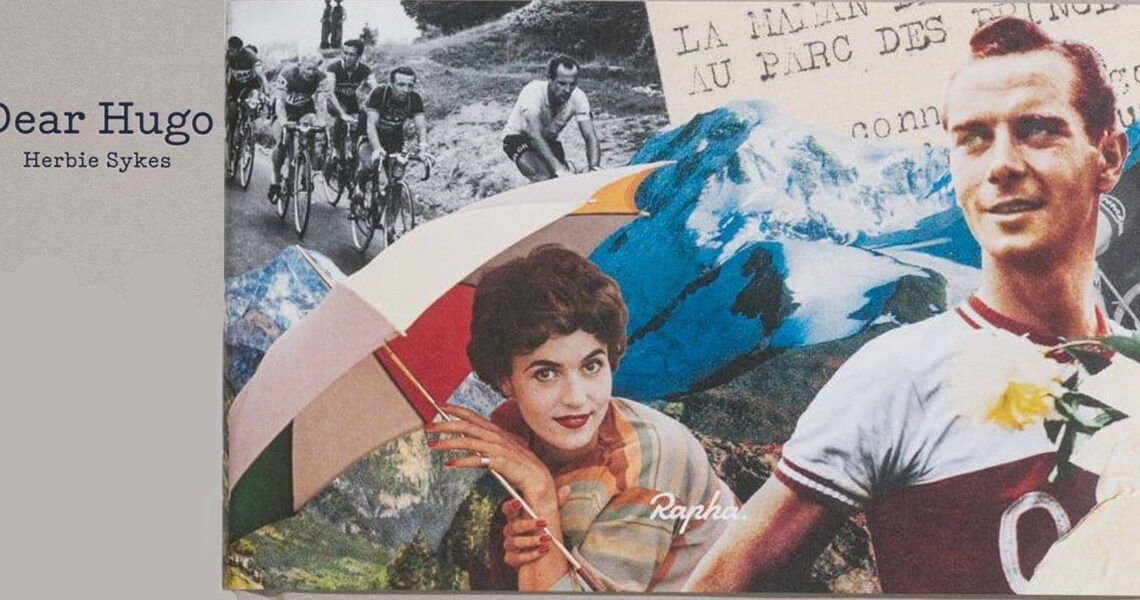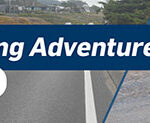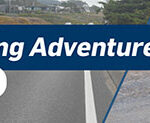
Our world of cycling literature tends towards realism, with not much in the way of fiction. Years after its publication in 1978 Tim Krabbé’s “The Rider” still remains at the top of the list of novels about cycling, with honourable mention for “The Yellow Jersey” by Ralph Hurne, which appeared in 1973. The latter has even attracted attention from Hollywood screenwriters but has never developed further. In a sport that never lacks for grand spectacle and human drama, maybe reality somehow trumps the imagination but one can still write fiction that transcends the “sports novel” and addresses greater questions.

A fine example of this is “Dear Hugo,” by British author/Italian resident Herbie Sykes. Sykes is a fine writer of non-fiction cycling books and it has been our pleasure to review several of them here, including “Maglia Rosa,”, “Balmamion,” and “The Race Against the Stasi,”. “Dear Hugo” is a very different read from his other efforts looking at cycling history, an imaginary construct and a reflection on celebrity and fandom.

The book opens with a photograph taken on August 17, 1947 at the Tour de Suisse, showing three boys running alongside Swiss rider Hugo Koblet, and this is where the unnamed narrator appears. He is an 84 year old man who has pulled out an old typewriter in 2021 to recount his story, the story of a very average life. But even if it is not very well executed, with lots of typos, what he is putting onto the pages grips us as it is also a meshing of his life and that of Koblet, the Swiss star who rose cycling career was a shooting star, a brief moment of glory followed by a sad unwinding. The narrator is one of the boys in that photo from 1947 and that is where his link to Koblet begins.
He recounts his childhood with his family and the father who was a big cycling fan. They seem like very ordinary people—the father works in a foundry—and enjoy domestic life. Koblet comes from a working-class background, starting in the family bakery in Zurich, and so this is common ground. Switzerland is a small nation and does not count many sports heroes. The father is fan of the colourful Ferdi Kübler but Hugo Koblet is a new arrival on the scene. In that race in 1947, the narrator runs alongside Koblet (who was to become famous as “the Beautiful Hugo” and “the Pedaller of Charm”) and feels the power of the rider in him. Koblet turns to look at him and smiles before continuing on and that is their sole meeting. But it clearly has lit something inside of the boy and as the book proceeds their paths will cross but in a peculiar way. The narrator refers to a “crime” he committed in his 30s but does not elaborate until the end.

The typescript of the narrator’s memoirs is interrupted by a whole range of documents related to Koblet’s life. We see a report card from 1935, a diploma attesting to his Amateur Championship in Pursuit on the track, correspondence from Gino Bartali and from Learco Guerra, a goodbye letter from a girlfriend. There are indications of the success to come and then in 1950 Koblet becomes the first non-Italian to win the Giro. Sponsorship offers roll in. There is travel, there are women…
In the meantime the narrator has taken up racing himself as a teenager but it does not really last that long. There are family matters to attend to and he soon finds himself in the working world and with other responsibilities. He still follows racing and Koblet but is uneasy about what is happening to the cyclist.
Koblet wins the Tour de France in 1951 and seems on top of the world but gradually the stream of documents show him spiralling downwards. His glamorous life (rather un-Swiss, it seems) has consequences and he copes poorly with financial matters (really un-Swiss, according to stereotypes). He marries a sophisticated fashion model (from Schaffhausen! Can you imagine?) and tries to support his brother’s not-very-successful enterprises. There are letters from banks and from lawyers, advice from managers, even abusive letters from fans. But not the narrator, who attends Koblet’s wedding. Well, not really as he stands in the parking lot across the street from the church where it happens.

As the narrator lives his own life he is concerned when he sees Koblet, now no longer a top rider, balding and overweight, being interviewed and the narrator thinks that he is an actor, Koblet of now pretending to be the other Koblet, and how difficult this must be. He muses with his employer at the moving company how nice it would be if Hugo came out with them when they where doing some relocation on a Saturday morning, just hanging out together. In the very earnest (and funny) conversation between the two of them they consider things they could talk about with Hugo to cheer him up, particularly the employer’s collection of beer mats,
The narrator stands around at key moments in Koblet’s life. He is at the hospital parking lot after Koblet’s accident; he watches the funeral from a distance later. Unlike that of the Beautiful Hugo, the narrator’s life is actually a very happy one, although his practical expression of it would not actually state that. Unknown to Koblet, the narrator stands on the periphery of his life but we realize that all the documents in the book—the affectionate letters from a Viennese actress, team offers, an expenses-paid trip to Mexico, mail from Fausto Coppi, a job offer in Venezuela, divorce filings, the bank statements—are on the periphery of Koblet’s life as well as they all swirl around a man who is invisible. There are no letters, no telegrams, no responses, no short or long replies to any of them from Koblet. He seems to have been a kind man, a charming and generous one as well as flawed and confused. We see the wreckage of his life and only at the end of the book do we understand the connection between these 30 years of documents and the narrator, the narrator whose own life is so different but unconsciously was drawn in by the brief adventure that was Koblet.

“Dear Hugo” is an elegiac novel that seeks to capture, with its clever and unexpected structure, the world of pro bike racing in the 1950s, a Golden Age according to some. The names are familiar—Coppi, Bartali, Robic, Bobet, Kübler along with Koblet—but they now fade from memory. But the book also tries to capture what makes fandom special, that thing that makes us applaud accomplishment and see something as perhaps better than it is because it brings meaning to us.

“Dear Hugo” by Herbie Sykes
127 pp., hardbound
Rapha Editions, London, UK, 2022
ISBN 978-1-912164-19-6
Price: US$25.00, CAD$31.00, €21.00
- The book may be ordered directly from Rapha CC at: www.rapha.cc.
The post PEZ Bookshelf: Dear Hugo appeared first on PezCycling News.




